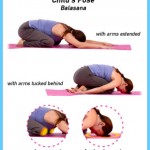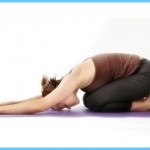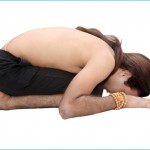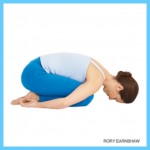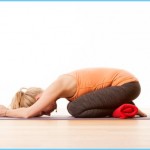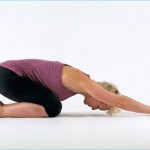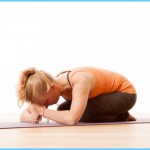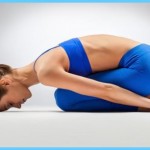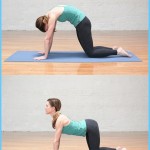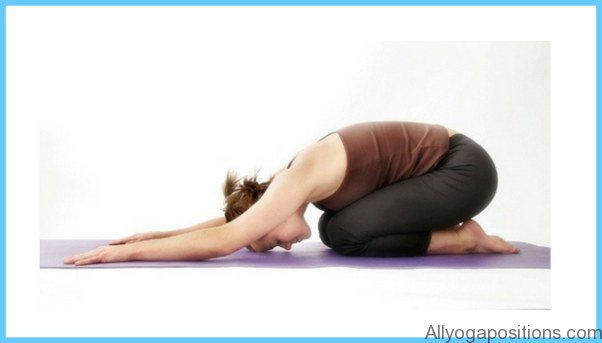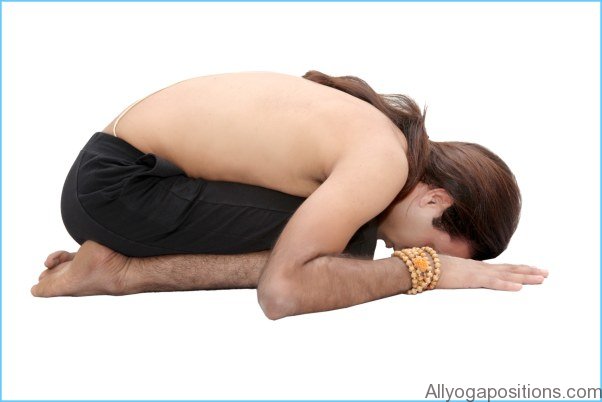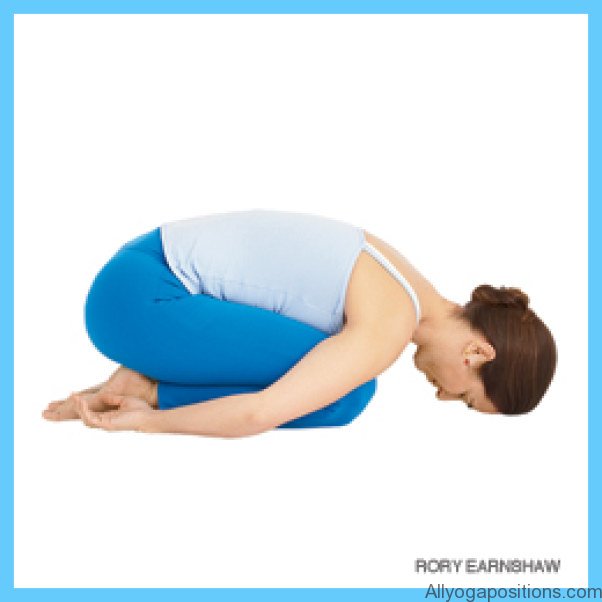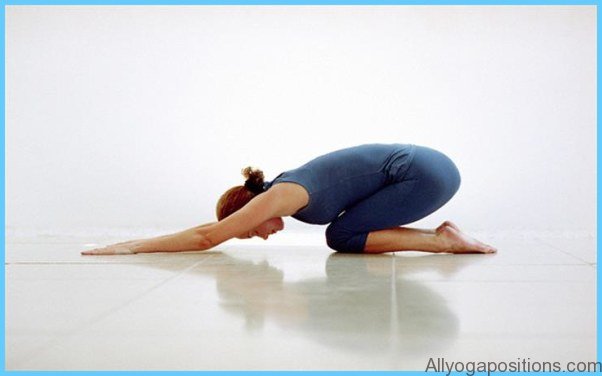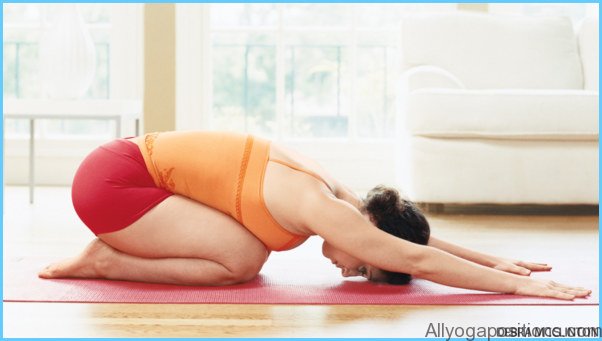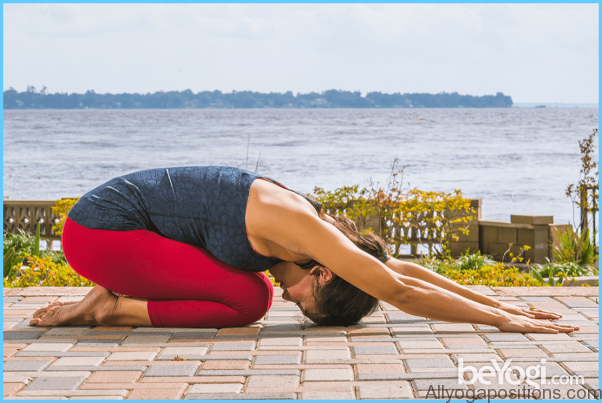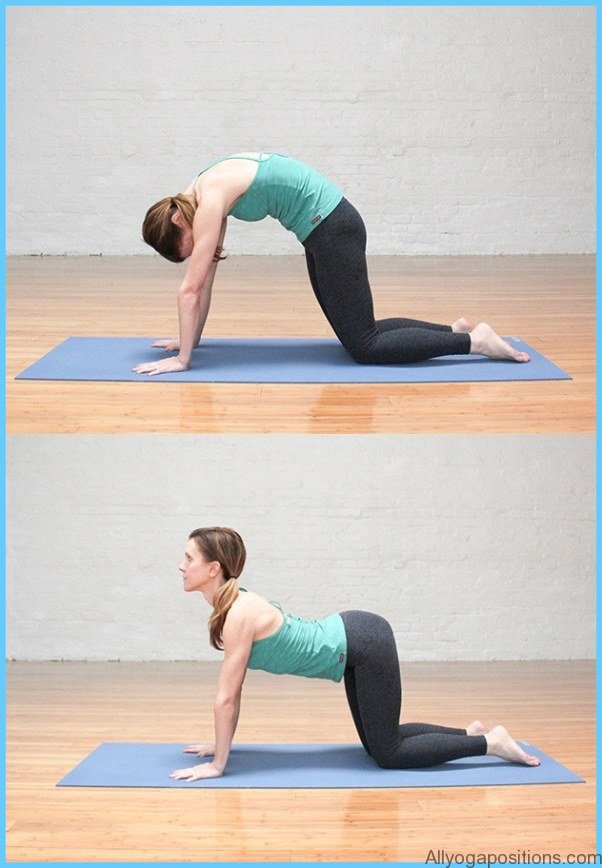Beautiful Imagery for Going Deep in Child’s Pose
“I cant help but close my eyes in [Child’s Pose], and I often use it as a chance to massage my third-eye (the space between the eyebrows) into the mat… Essentially, it feels like you can go deep inside yourself in Child’s pose… and get a sense o f being in utero – cocooned within the womb like an unborn baby. That sense o f sa fety and deep nurturing can be very healing if you allow yourself to sink softly into it. As an unborn baby, you had nothing to do and nowhere to be – the idea of rekindling that feeling in our busy lives sure sounds good…
“Child’s pose is the perfect posture for learning the art of softening. Softening is different from resting. If you have an attitude of ‘go hard’in other postures and use Child’s pose simply to switch off, you may miss the subtleties of softening into every posture. You can deepen into every posture, even a Warrior pose, simply by taking a softer, gentler attitude.
“Try thinking of Child’s pose as a resting posture, but not just a rest. Instead, you softly open the lower spine and hips and stretch the shoulders by being active, not passive. The active part is your focused attention, breath and surrender into the depths of the posture. This is different from both the action of pushing/striving and the inaction of flopping. ’’ – Kathy Kruger, doyouyoga, How to Get the Most out of Child’s Pose or Balasana48
How and When to Do Child’s Pose or Balasana Photo Gallery
Lie on your back with your feet together and knees out to the side. You may use pillows or yoga blocks under your knees for support. Rest one hand on your belly area and the other hand on your heart area. Relax the elbows down by your sides. Close your eyes. Relax your toes, ankles, knees, hips, fingers, wrists, elbows, shoulders, lower back, middle back, upper back, chest, shoulders, neck, jaw, face, forehead, eyes, ears, and the top of your head. Stay as long as it feels good.
“Bound Angle pose is also called Cobbler’s Pose because it is the position that shoemakers use in India. They hold the shoe with the feet so that both hands are free to work on the shoe that they are making. Westerners can find this pose challenging because of the years we spend sitting in chairs with our knees close together.
Lie on your back, arms at your sides, palms facing up. Stretch your legs straight out to the front. Allow your feet to fall to the sides. Close your eyes. Relax your toes, ankles, knees, hips, fingers, wrists, elbows, shoulders, lower back, middle back, upper back, chest, shoulders, neck, jaw, face, forehead, eyes, ears, and the top of your head. Stay as long as it feels good.
“With Savasana’s freedom and lightness, it’s said, we find ourselves able to digest all the experiences and postures of the practice that came before. Savasana is a resting pose, but the resting we do is active; it is about integrating what we’ve learned – yes, a radical idea in itself. But most striking to me, Savasana is structured into the practice. We ‘re not left to find some quiet time later; we ‘re led to it by the hand. Were it not part of the drill; I’d simply roll up my mat and head home. I know this about myself. More importantly, yoga knows this about me, hence the built-in Savasana. We like a deliberate rest – need it, even – but most of us aren’t evolved enough to insist on it without coaxing. ”
I don’t think we can underestimate the power of that quiet time. In our busy world, we rarely take the time to relax and let our minds just be free. Practiced this way, Savasana provides a time of inner peace. A moment of relief from the information overload of our always-busy lives.
“I’d like to offer you a challenge. The next time you rest in that final yoga pose, try not to simply melt into rest and oblivion. Don’t fall asleep, either literally or figuratively. Instead, stay truly awake, in a sort of resting meditation. Lie still, in complete silence, present with the sensations of your body and completely aware of the random thoughts of your mind. Use that time to connect with the beauty and perfection that is already within you. ” – Tracy Weber, Whole Life Blog, Savasana (Corpse Pose): A Time to Rest or a Time to Become51
I really enjoy practicing this position any time of the day when I need relaxation This position helps calm the nervous system, boost our immune system, and reverse the degenerative effects of gravity. Start by lying on your back close to a wall. The wall can be either on your right or left side. Lift the legs and turn towards the wall so they can rest on the wall. Allow your legs to rest more than hip-width apart. You can modify this position by placing a pillow under your hips or moving the hips further away from the wall. Either way, you go, make sure the position is relaxing for the whole body. Stay as long as you’d like. Once you’re ready to come out of the position, lift your hips and remove any padding. Roll either side into an embryo position. Once you’re ready, gently press into your hands and come up into a sitting position.
“A lot ofpeople don’t understand or appreciate the value of not doing. But a lot of traditional yoga is just that. The idea is that you’re already doing something that is interfering with your self-awareness, your self-understanding. And that rather than doing something to fix it, what’s really necessary is to undo what’s getting in the way, which means a need for surrender, a letting go.
The most important part of the final relaxation is the affirmation The affirmation achieves the goals you have set for yourself mentally. “The affirmation is neither said with great force nor anguish. It’s simply is a stimulation and a re-stimulation of the thought process. You are a result of your thinking; thus, yoga begins with your thinking and ends with illumination.” Use any of the affirmations I mentioned previously or have fun creating your own. Hold the sweetness close to your heart and dwell in the moment of Savasana.

